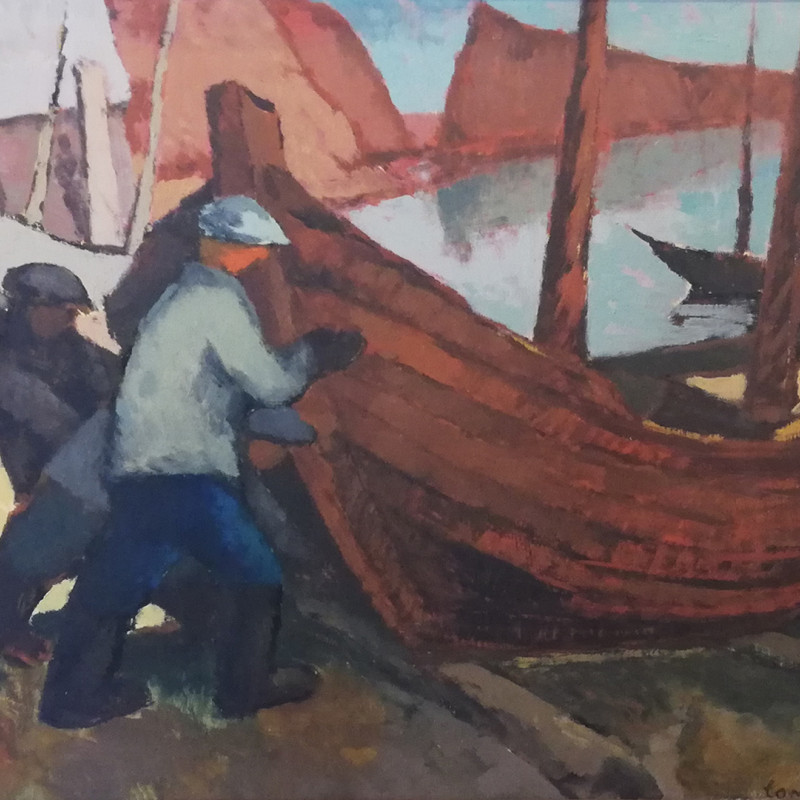Canadian artist Alberto Tommi was born in the Metropolitan city of Florence, Empoli in 1917. A strong and spirited individual, Tommi found reconciliation from his difficult childhood through his love of art and his mentor, Filipino de Pisis.
The last eleven years of his life (1949-1960) were fundamental to his artistic maturity and would allow him to produce the most essential works of his career. This time period directly coincides with his move to Percé, Quebec in 1949 alongside his wife Suzanne. Tommi was influenced by the region’s Native American culture, sacred lakes and endless hills. Nature became a fundamental feature of his artwork and allowed him to uncover the ‘essence’ of the landscape.
His works consist of a very unique composition—scattered houses in incomplete villages, dispersed trees, forests, rivers and foreground-positioned boats. In addition, Tommi’s compositions are almost completely absent of significant human figures. Even when human figures are present, they remain anonymous with their back turned and their faces out of sight.
In 1956, Tommi and his wife Suzanne Guité opened the first artist-run centre in Quebec— “Le Centre d’Art de Percé”. Located in a restored, Normandy-style house in Gaspésie, “Le Centre d’Art de Percé” was a space of multidisciplinary art— painting, sculpture, theatre, film and music. The centre was closed after the death of Guité in 1981.
In 2013, close to forty of Tommi’s works were exhibited at the Musée Le Chafaud de Percé, mainly landscapes from the region of Gaspésie.









